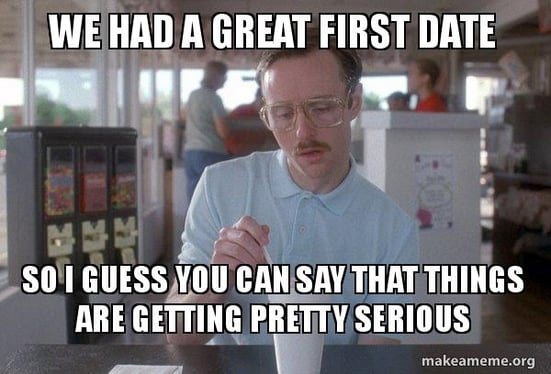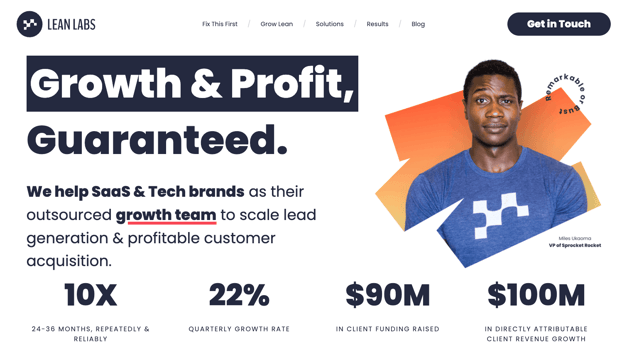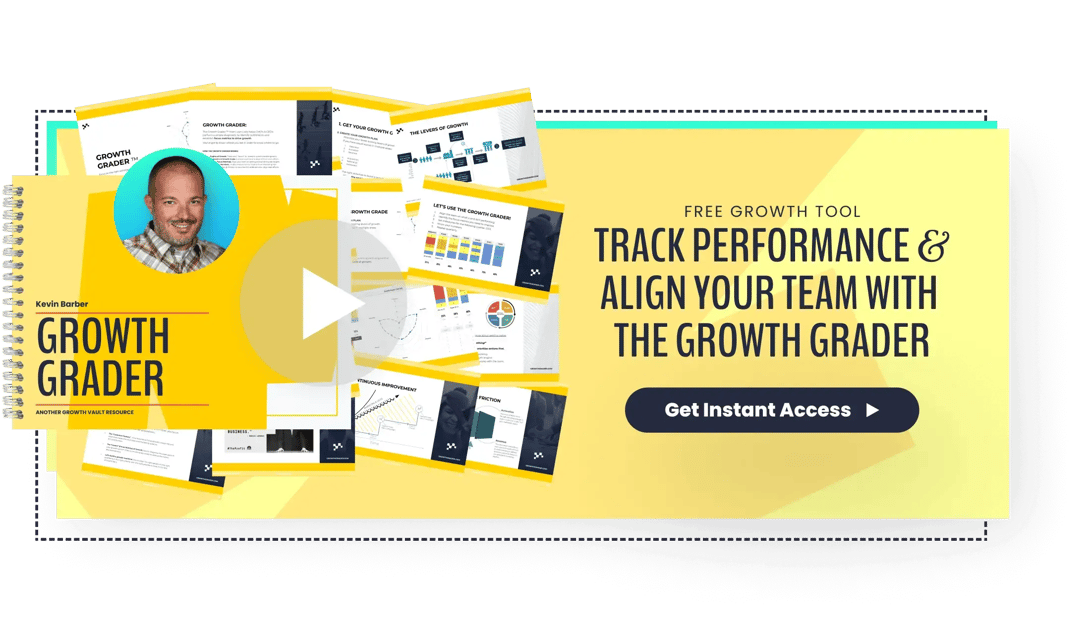Does marketing your SaaS product feel like navigating through a corn maze while blindfolded and carrying a chicken? Or, maybe you’re considering resorting to carrier pigeons because other strategies aren’t working.
There are many marketers in the same position.
But all is not lost.
In this blog post, we share the five most painful challenges in SaaS marketing and proven solutions to overcome them. (Luckily, none of them require you to train any pigeons.)
Sounds simple enough, right? And it is, until you know that SaaS marketing differs from marketing other products or services.
- It’s hard to stand out in an exponentially-growing market
- There will be countless innovations similar to yours
- No tangible product means the only true way to get your solution into your customers’ hands is through free trials
- Tracking downloads and usage to figure out why customers aren’t using your product is no easy task
The list goes on. How do you overcome these challenges?
It starts with a solid go-to-market strategy. Without one, you’re literally guessing. You’re creating a product you think people want, throwing marketing dollars at it, hoping it produces ROI, and praying for conversions.
We can do better than guessing. So. let’s get to the bones of these challenges and overcome them together.
Challenge #1: It’s Hard to Stand Out in a Crowded Market
Trying to stand out based on your features or technology is challenging. Likewise, you can’t stand out if you go for everyone in the market. The barrier to entry is too low.
The global market for marketing technology is worth an estimated $509 billion. And there are about 10,000 different martech tools at the time of writing. Developing “good enough” software doesn’t cost much, enabling new entrants to rapidly bring new products to the market, intensifying competition even further.
All of this causes your ideal customers confusion, and in the end, they might choose a solution based on price.
Solution: Differentiate
Your unique value proposition (UVP) is a powerful weapon. The best UVPs quickly and accurately convey what you have to offer (the problem you solve), the result your customer will get from using your product, and how you do it differently from your competitors.
- Be clear about who your solution is for
- Keep it short and straightforward
- It should be easy to read, understand, and explain to others.
How can you develop your UVP? Customer research is an excellent place to start. Think of your customers. Who are they? What are their needs? What are their preferences, pain points, and expectations?
Once you clearly understand your customers, get your minimum viable product (MVP) out and start collecting data.
Identify your unique features and what customers love about your product and what they don’t. These features could be a particular functionality, a unique approach to solving a problem, or a specific aspect of the user experience.
Lastly, invest in research and development to identify emerging technologies and trends. Could you improvise your product or add features? Or even create a new product to solve another problem.
Challenge #2: Most Website Visitors Don’t Book a Demo or Purchase
If you don’t solve the first challenge, you’ll see this challenge pop up often. Converting visitors to leads is already tricky. You’ll struggle even more if you attract the wrong visitors to your website.
Even if you do get your ideal customers onto your website, what compels them to convert? Poor website design doesn’t. A lack of compelling content doesn’t. And CTAs (calls-to-action) that lack personalization and a sense of urgency certainly won’t.
Solution: Focus on Conversion
Coordinate your efforts across your team. A user-centric design, compelling messaging, and outstanding CTAs all factor into an intuitive website your ideal clients will love.
Design your website with your user in mind. Your website is your best salesperson. Think of it like this; it’s the first date with your customers. Is your website exciting and engaging enough to warrant a second date?
 Image source
Image source
To build a high-conversion website experience, consider the following.
Lean on Data to Inform Your Website Strategy
- Use Google Analytics to check real-time data and site speed and find your best-performing pages. Discover where your viewers visited those pages from, the number of clicks, time spent, unique page views, and bounce rates.
- Use heatmaps to discover which parts of your website attract the most attention, and session recordings show visitors’ actions when they enter your site.
- Use a tool like SEMRush to audit your website, gather information on organic keywords, and informing your strategy to optimize SEO.
Optimize for Conversions
Start with your homepage. Let’s look at ours as an example.

The headline tells customers what they can expect–growth and profit guaranteed.
The subheading is our UVP, telling our ideal customers precisely what we do for them and how. Then we have social proof below. We answer our customers’ questions about us and give them a compelling reason to learn more. You can do the same!
Make it Easy
Leverage your understanding of your ideal customer and craft messaging that stops leads in their tracks, compelling them to move forward in the buying process. Not every customer is ready to buy, but they might be willing to take the next step.
Create a connection value offer (CVO). What can customers expect from a call with you? What will they get? Make it a no-brainer. For example, for one of our clients, we created a schedule a call page that told potential customers what the outcome of the call would be:
- We would uncover areas where customers are overpaying, losing time, or dealing with inadequate services. Or,
- Our experts find no issues with your current service, and customers can sleep easy at night.
Why would a potential customer not jump on a call or schedule a demo? Make it easy for them.
Other ideas:
- Create irresistible lead magnets that provide instant value and quick wins so you can build trust.
- Create a user-friendly design with intuitive navigation and optimize for mobile.
- Don’t forget about SEO. Optimize for relevant keywords and craft compelling content to drive organic traffic.
I don’t want to go down the website rabbit hole in this article, but you can check out Is Your SaaS Website Design Optimized to Fuel Growth? for an in-depth look at how to optimize your website.
Challenge #3: You Have a Complex Sales Process
Sales cycles in the B2B SaaS industry are long.
- You’ve got to factor in generating qualified leads, nurturing those leads, and ultimately closing a deal. There will be multiple stakeholders to get buy-in from, product customization, and technical integrations.
- Most B2B SaaS offerings require hands-on onboarding, training, and implementation to ensure customers can use your software effectively.
- Customer engagement doesn’t end once the sale is closed. You must provide ongoing support, customer success programs, and product updates.
Solution: Remove Friction in the Sales Funnel
Planning out your funnel stages helps to eliminate friction in an already lengthy process. It’s easy for leads to fall through the cracks when your team isn’t cross-functional. Your plan is your own, but you must establish sales pipeline stages as a general rule. For example, yours might look like this:
Lead generation → Lead qualification → Initial contact → Schedule a presentation → contract sent → closed won/closed lost
For more on sales pipelines, check out 4 Proven Tactics for Filling The Sales Pipeline with Qualified Leads.
Next, set about removing friction through the pipeline.
For example, you can use marketing automation tools to streamline the lead nurturing process, or use retargeting campaigns to re-engage lost opportunities. A robust CRM platform like HubSpot can help manage the sales pipeline and reduce manual tasks associated with the sales process.
Marketing and sales teams must communicate. Sales can tell marketing teams the common questions and objections they get, and marketing can create compelling and educational content that answers those questions and helps overcome objections.
Sales Funnel Metrics
Measuring and optimizing the sales funnel is crucial for SaaS companies. Key metrics such as conversion rates, cost per acquisition, customer lifetime value, and churn rate can provide insight into the effectiveness of the sales process.
Using these metrics, you can identify areas for improvement and optimize the sales funnel to increase conversion rates and customer retention.
Challenge #4: High Churn Rates Slow Growth
A high churn rate (the rate at which customers cancel their recurring subscriptions) indicates that something isn’t working. Why are you leaking revenue? Why do customers churn? Without customer retention, you can’t grow to your full potential.
Predictable monthly recurring revenue (MRR) helps fund growth. You can plan campaigns and projects and budget for other endeavors. With a high churn rate, you get lost revenue and increased customer acquisition costs.
Of course, it’s challenging to retain customers in a highly competitive market. One instance of poor customer support, and you might lose a customer. Or a competitor might release a cheaper, similar product. Sometimes, churn happens because customers forget to update their card details!
Solution: Focus on the User Experience
You need customers to feel like your product is essential in their lives. Neil Patel describes it as making customers sticky. The more customers use your product, the less likely they are to leave. But aside from your actual product, think holistically.
For example, what’s your onboarding process like? Do your customers make it beyond 90 days? If not, create an onboarding experience that makes it feel like you’re a partner. Reduce friction during onboarding and provide step-by-step guidance.
 Image source
Image source
Invest in stellar customer service. Ask for feedback and offer incentives for a response. Connect with users as much as possible without being spammy. When they have questions, respond promptly and solve their issues.
Customers’ negative feedback can be an opportunity to improve your products. Taking customer feedback seriously, being transparent and authentic, and actively soliciting and incorporating it into product development can show customers that their opinions matter.
Creating a process for handling negative feedback can also help turn unhappy customers into loyal advocates. You can demonstrate a commitment to customer success and improve retention rates by addressing their concerns and offering solutions.
Challenge #5: Customer Attribution and Marketing ROI Are Hard to Track
It’s notoriously difficult to measure the ROI of marketing campaigns, but you still need to know if marketing is effective. Data is more available now than ever, but looking at the right metrics is the only way to determine ROI.
Related: The 6 Growth Marketing Metrics Every Business Needs to Track (& How to Track)
How can you stay on top of attribution with such a long sales cycle? There are multiple touchpoints on the customer journey; how can you tell which touchpoints influence final purchasing decisions?
After learning about your product through an online advertisement, a customer might visit your website, sign up for a free trial, and eventually purchase after several weeks. In this scenario, it can be difficult to attribute the sale to a specific marketing campaign or touchpoint.
Solution: Be Strategic and Analytical
Separate your projects and focus on metrics to tie ROI to marketing efforts. For example, if you want to see the ROI of written content, create a strategy. Traffic in itself is a vanity metric. Instead, you want the right traffic and growth levers to help you achieve that.
Think of your best and most loyal customers. What would make them promote your product or service to their friends and colleagues? There’s your content! Whatever made them purchase and stay with you, that’s the message you should activate leads with.
If you can build awareness around whatever made your customers choose and stay with you, you can use that message to hit acquisition targets, too. You can then use congruent messaging to hit your activation targets, and so on.
Set Goals and KPIs
Start with MQLs. Not traffic, not overall leads. But marketing qualified leads that have opted in to learn more about what you offer. You can measure how much of your content marketing generates qualified leads. Then see how those leads interact with sales and how many buy.
Now you have actual data!
Set awareness goals, acquisition goals, activation goals, and so on. You can follow metrics throughout the six levers.
- What percentage of traffic became leads?
- How many of those leads were qualified?
- Did they speak to sales?
- What percentage of the activated leads became customers?
- Did you retain them?
- What percentage of your customers gave referrals?
Now you can tie revenue to marketing. Using a tool like HubSpot can help measure these metrics.
SaaS Marketing Challenges: Don’t Suffer in Silence
To tie this all together, I’m returning to the start. You need a robust go-to-market strategy, informed with data, and you’ve got to be willing to iterate. So many SaaS marketing challenges arise from not having a solid go-to-market strategy. It creates friction.
Here at Lean Labs, it’s our mission to help deserving SaaS and Tech brands scale lead generation and profitable customer acquisition. We help identify the friction that’s stopping you from growing. You can overcome any SaaS marketing challenges but must fix the core problems holding you back.
If you want to see what it looks like to outsource your marketing efforts and how we work with you, unlock the Growth Playbook and take a peek behind the curtain.










